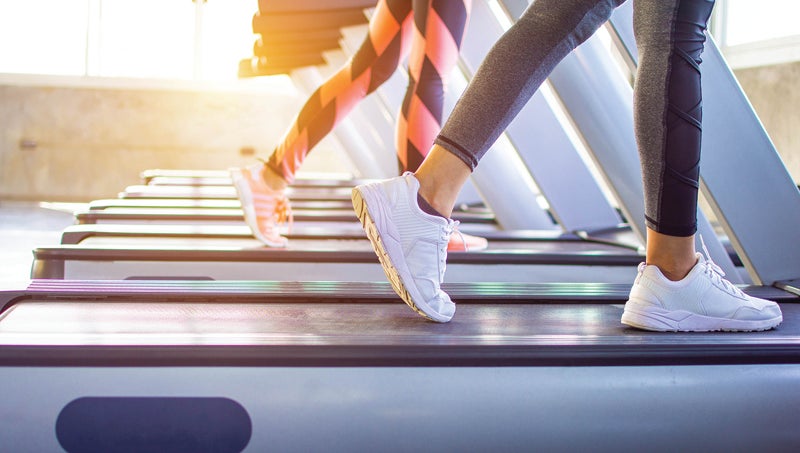The ‘new normal’ at exercise facilities
Published 9:46 am Friday, July 24, 2020
|
Getting your Trinity Audio player ready...
|
TRAVIS ROGERSON
Many states within the U.S. have allowed gyms to reopen with certain restrictions imposed on daily operations due to COVID-19. This information is collected by the National Governors Association and is available in their “Summary of State Actions Addressing Business Reopenings.”
Among states allowing gyms to reopen, frequent safety topics are masking, distancing, capacity limits and sanitation. While the extension of Phase II in North Carolina’s reopening approach means gyms remain closed, let’s go over what you and your gym should do when the time comes to safely reopen.
The first action taken by staff and members of a gym to keep it a safe environment happens at home. Before you grab your gym bag and head out, ask yourself if you have had any new cough, fever, shortness of breath, muscle aches, headache, loss of taste or smell, sore throat, congestion, nausea, vomiting or diarrhea. These are common symptoms of COVID-19, and do not consider going anywhere, except for medical care, if you have any of them. Seek advice from a medical professional and only return to the gym once your symptoms have improved, 10 days have passed since symptom onset and you have not had fever or taken fever-reducing medication in the previous 24 hours. According to the Centers for Disease Control and Prevention, you should also quarantine for 14 days if you have been in close contact with anyone who has COVID-19. It generally takes two to 14 days after exposure to COVID-19 to develop symptoms, so taking these preventative steps before you step into the gym can reduce the risks for all gym-goers.
When you do arrive at the gym for the first time since reopening, expect some changes and practice patience. Understand that while you may be included in a demographic less affected by COVID-19, gym staff need to consider all members’ safety and concerns. An initial screening may be implemented upon or before entering the building. You may be asked about COVID-19 symptoms, have your temperature taken and, perhaps, be offered a mask for use while not exercising in the facility.
The World Health Organization does not recommend people wear masks while exercising since sweat can cause the mask to become wet quickly, leading to more difficulty breathing and microorganism growth. The Medical Fitness Association and CDC agree that wearing a mask while strenuously exercising is not advisable. However, it is the recommendation of these organizations to wear a mask inside the facility while not actively exercising.
Once you have been screened and enter your gym, it is likely equipment will have been moved around or closed off to allow for proper physical distancing. According to the American College of Sports Medicine, distancing requirements in fitness facilities are ranging anywhere from 36 to 225 square feet per member to account for increases in respiration. The MFA has issued a distancing recommendation of 10 feet (100 sq. ft.) between each member performing cardiovascular exercise. Capacity limits, such as 50% of fire-code capacity, are being implemented in many states to ensure physical distancing policies can succeed. While it will be great to see the unmasked portion of faces you have not seen in while, do not congregate to socialize and be conscious of your fellow gym-goers in your movement around the gym.
Proper hand sanitizing and disinfecting of gym equipment should also be focal points during each gym visit. Wash your hands often with soap and water, and when doing so is not feasible, make sure to use hand sanitizer frequently. While hand sanitizer and washing stations should be readily available inside the gym, you may also consider bringing your own alcohol-based sanitizer with a recommended minimum of 60% alcohol. If you are prone to sweating during exercise, consider wearing a head band as this may reduce the urge to touch your face when you inevitably begin to perspire. While keeping your hands sanitized has a fairly standard protocol, you may need to seek advice from gym staff on properly disinfecting equipment. Each EPA registered disinfectant has a specific contact time required to work on microorganisms such as COVID-19, so make sure you’re prepared before you begin exercising. Perform the disinfecting protocol your gym requires before and after equipment use, and gym staff should also be frequently assisting in disinfecting efforts.
When your gym reopens, take time to read newly posted signage and ask questions on safety protocols! Also be patient with your fellow members and gym staff. Establishing a new normal for fitness facilities will take some time. New recommendations are frequently being issued from leading health organizations as more is learned about COVID-19. When gyms reopen and fitness employees are scurrying about with new protocols, know they’re smiling ear-to-ear behind their masks because it will be good to be back!
Travis Rogerson is the supervisor of exercise programming at Vidant Wellness Center. He can be reached at 252-975-4136.






